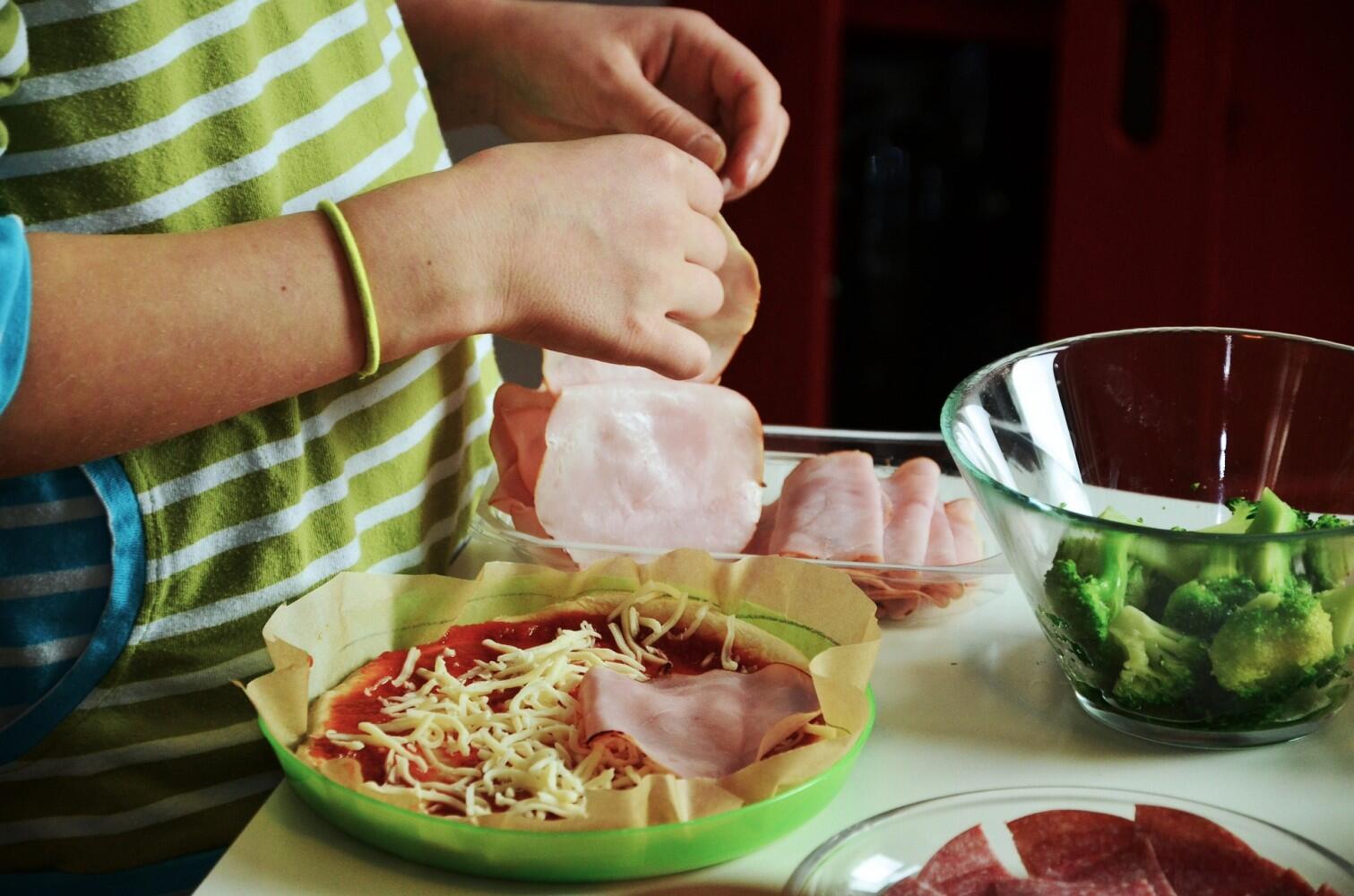Study provides more evidence that kids who cook have healthier dietary habits

URBANA, Ill. – In the United States, a majority of children exceed the recommended amount of empty calories in their diets, and fail to meet the recommendation for fruit and vegetables—especially dark green vegetables. Practitioners look to intervention programs that could help children develop better dietary habits.
Cooking-related programs for kids have the potential to improve children’s diet quality as research has shown that cooking involvement is associated with more positive food choices. Determining how successful these programs are, or will be, in improving dietary behavior requires valid and reliable assessment tools.
Melissa Plugh Prescott, assistant professor of school and childhood foods and nutrition in the Department of Food Science and Human Nutrition at University of Illinois, along with colleagues from Colorado State University, recently led a study looking at how accurate certain measures are in predicting the overall diet quality in kids who were participating in a cooking program.
The researchers found that valid, low-cost, and easy-to-administer measures of kids’ vegetable preferences and cooking attitudes did predict diet quality. The results also provide further evidence that cooking is associated with better dietary behavior, and of the importance of cooking intervention programs for kids.
“We wanted to understand the relationship between some of these outcomes related to cooking and how those could possibly predict diet quality,” Prescott says. “There’s already been some research that shows that kids who are involved in cooking have better diets, but those were based on less robust dietary methods. Things like food diaries or even food frequency questionnaires can be a little challenging for kids to be able to conceptualize how often or what their average food intake of a particular food is.”
Prescott and her colleagues collected information using 24-hour food recalls, in which fourth grade students (101) recalled over the phone—two times over 2 to 4 weeks—what they had eaten over that 24-hour period. They also completed surveys about their food preferences and their cooking attitudes and cooking self-efficacy (i.e., how confident individuals are in their ability to cook).
Typically, this information is collected before and after the course of the intervention program. For this study, however, the researchers only collected information before to see how valid the measures were in predicting Healthy Eating Index (HEI) scores in the children—fourth graders—who would be participating in a cooking program.
“The HEI is basically a reflection of how well someone is meeting the dietary guidelines for Americans. It’s not just an assessment of how many calories you ate, etc. There are certain recommendations for what people are supposed to be eating, so the HEI scores reflect how well you are meeting those recommendations with your current intake, as reported on the dietary assessment,” Prescott explains.
For the study, Prescott and colleagues focused on four parts of the HEI: the whole fruit component, the total vegetables component, the greens and beans component, and the empty calories component.
“We picked these because these are all really important for kids. Children are consuming a lot of junk food, so that is what’s captured by the empty calories component. And they’re not eating enough vegetables, particularly the greens and beans. We are also interested in their whole fruit. While there is another component that looks at ‘total fruit’ which also includes fruit juice, we focused on whole fruit because we feel that is more important in terms of obesity prevention and healthy habit development.”
The researchers found that the vegetable preference scores in particular were related to target outcomes in terms of the HEI. “It reinforces how important that is in terms of healthy habit development. We want kids to develop a preference for vegetables, knowing that it’s predictive if the child likes vegetables, they will have a better chance of meeting the dietary guidelines.”
The kids were surveyed about their cooking attitudes and self-efficacy, as well, with questions such as, “how do you feel about cooking?” Or, “do you like to cook?” Cooking self-efficacy pertains to how confident someone feels that they can cook.
“With cooking self-efficacy, kids who thought they could cook predicted their likelihood of having an overall high healthy index score, meaning their overall diet was reflective of the dietary guidelines, as well as a higher whole fruit component, and the total vegetable component,” Prescott adds.
Overall, Prescott says the study emphasizes the importance of shaping children’s food preferences, especially when it comes to vegetable preferences because those are predictive of diet quality. “We should use cooking as way of doing that, because cooking independent of vegetable preference, also appears to play a role in promoting diet quality.”
Prescott also explains that, looking at the success of cooking programs, 24-hour recalls are a more reliable and valid dietary assessment especially for the age group included in the study—fourth graders. “It can be expensive to evaluate cooking interventions, especially if you want to assess the impact on diet. So by showing the predictive validity of some of these more easy-to-administer screening tools, programs who can’t afford to do other dietary assessment methods can use this to show that if we can make a difference in cooking attitudes, or self-efficacy, or some of these other things we measured, it means something.”
The paper, “Child assessment of vegetable preferences and cooking self-efficacy show predictive validity with targeted diet quality measures,” is published in BMC Nutrition [DOI: 10.1186/s40795-019-0286-7]. Co-authors include Prescott, in the College of Agricultural, Consumer and Environmental Sciences at U of I, and Barbara Lohse, Diane C. Mitchell, and Leslie Cunningham-Sabo.